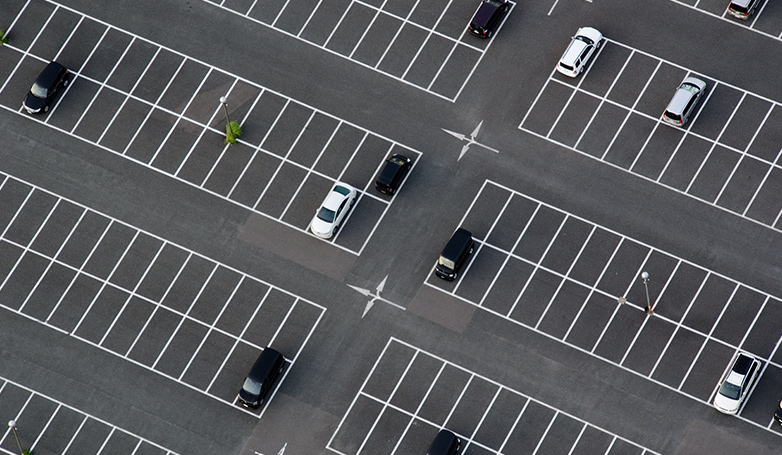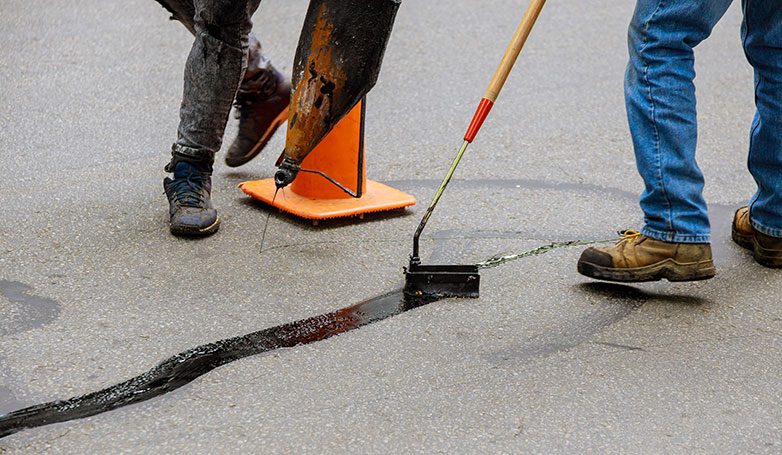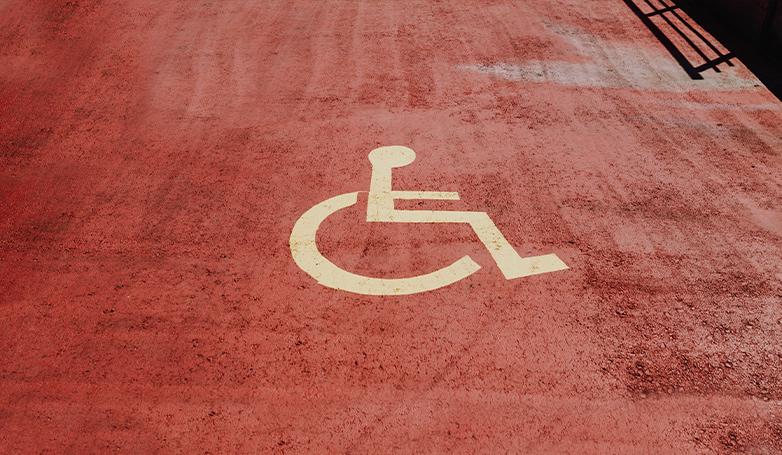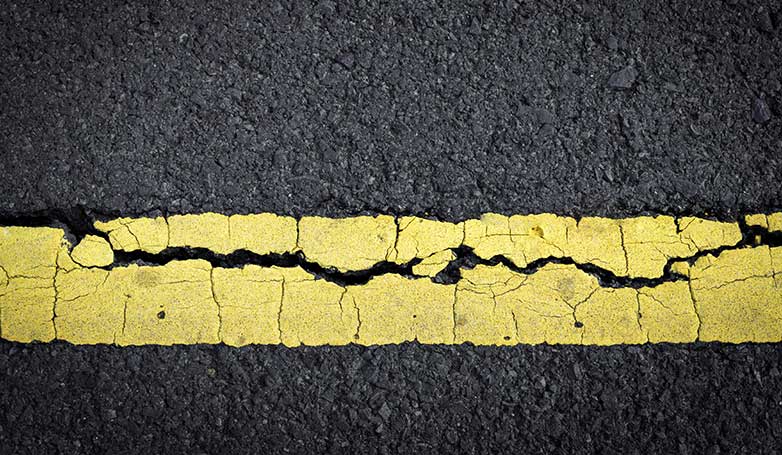The Ultimate Guide to a Blacktop Parking Lot
Are you an architect learning about parking lots and their constructions? Or maybe you are a building owner wondering which parking lot will go best with your facility?
Well, in either case, you are in the right place because this article will give you valuable insight into what these parking lots are. You will also learn about installation, repair, and maintenance and their benefits and drawbacks.
Whether your building is for an industrial, commercial, or medical purpose, you must ensure to choose an adequate parking lot design. A parking lot is the first introduction of your facilities to the visitors and may impress or disappoint them about your services.
“A parking lot is your business gateway through which every employee, customer, and visitor will pass. Therefore, you must install and maintain a blacktop parking lot because it is aesthetically pleasing. Moreover, you must also ensure that you have a well-conceived parking lot with adequate parking lanes with markings without any hampering. A blacktop parking lot will allow you to turn your parking lot design into a positive experience to motorists visiting your facilities.”
Therefore, it is wise to familiarize yourself with what asphalt parking lots are.
What Are Blacktop Parking Lots
They are known by many names, such as asphalt parking lots or tarmac parking lots. An asphalt parking lot is pliable, making it more forgiving than any other type of parking lot material such as concrete.
These types of parking lots perform better in the freeze and thaw cycle. Therefore, if you live in a snowy region, asphalt parking lots can be an extremely beneficial and long-lasting solution. The black color of these parking lots can absorb the sun’s heat and melt snow more rapidly than any other parking lot surface.

How Do You Install Them
If you wish to learn about the asphalt parking lot installation, there is so much you need to be aware of. So let us look at the step-by-step process of how to install them from start to finish.
1. Removing Existing Surface
The first step to install these parking lots is to demolish and remove the existing surface. For this, you will need to use heavy machinery, including forklifts, and bobcats, etc. Other types of equipment to use are large dump trucks and front loaders etc.
Once you have demolished the existing surface, make sure to remove all debris.
2. Preparing the Surface
Now that you have demolished the old surface, it is time to grade and slope the surface for adequate water drainage. This is critical because water can be a significant source of damage to your parking lots.
3. Preparation of Sub-Base
Sub-base is one of the most vital parts of your parking lot as it provides a stable surface in order to support your new pavement. Additionally, it will also work as a frost barrier to reduce the winter damage caused by freezing and thawing.
The better your sub-base is, the more years of durability it will guarantee.
4. Proof Rolling
Proof rolling is an extra step that ensures that your underlying surface is strong enough to support the new asphalt. Proof rolling uses heavy trucks to check if the gravel flexes under the weight. If it does, then the surface is not ready yet and is known as soft areas.
You can use undercutting to repair these soft spots by digging the surface up to 3 feet under the soft spot and replacing the soft clay with stronger material. Once you have addressed all soft spots, your surface is ready for the next step.
5. Adding the Binder
In this step, you will add the binder layer, which contains a large aggregate with oil that ensures the strength and durability of your parking lots.
6. Parking Lots Installation
Once you have added the binder, your surface is ready to install the new blacktop/asphalt surface. This surface contains a small amount of aggregate, oil, and sand, creating jet-black material providing a surface with a smooth ride and attractive, shiny finish.
7. Transitions and Butt Joints
Butt joints refer to areas where your old parking lot surface meets the new asphalt surface. These transitions require extreme care to ensure adequate water run-off and grading. Moreover, these butt joints ensure that your pedestrians and drivers do not feel the difference between the two surfaces.
8. Final Roll
The last stage is a final roll to smooth and compact the parking lots using a roller truck. This process ensures to rectify small bumps of stones and aggregate poking through the surface.

Blacktop Parking Lot Maintenance
Do you already have an asphalt parking lot with signs of severe wear and tear due to years of use? In that case, you may require a tremendous amount of repair and maintenance in terms of patching the uninviting, blotchy, and uneven surface.
These parking lots will require regular repair and maintenance. That said, an adequately installed surface with adequate and timely maintenance can last up to 30 years approximately.
The maintenance of such parking lots includes the following.
- Sealing
Your parking lots can suffer from cracks and potholes over a period of time which requires sealing. However, you must not seal the new parking lots until they are at least six months old. Once this time period has passed, you must reseal them with regular intervals of 2 to 3 years in order to slow down the deterioration process.
The frequency of resealing your asphalt parking lots also depends on the volume of traffic. The more traffic you get, the higher the frequency to reseal. Moreover, it is also advisable to use a high-quality asphalt sealer to ensure durability and strength for a long time.
- Material for Sealing
Asphalt is prone to crack, and you cannot add controlled joints to ensure where these cracks appear. However, whenever a crack appears, you should pour a hot rubberized sealer to seal these developing cracks.
This process of sealing the cracks will rectify further damage and development of any potholes over time. The ideal time to seal the cracks is during the fall season because during this time, the asphalt is cooler, and cracks are wider.
By the time summer returns, the asphalt will warm up and expand due to the sun’s heat and tightly seal the cracks offering prevention against water run-off and rain damage.

Advantages and Disadvantages of Blacktop Parking Lots Vs. Other Parking Lot Materials
If you are looking for cost-efficient and durable parking lots for your commercial facilities, then an asphalt-based parking lot is the best and practical solution. These parking lots offer you an investment that will continue to provide you with benefits for many years to come while paying for it.
Apart from the monetary benefits, a parking lot offers an impeccable first impression to your visitors, customers, and employees before they set foot into your facilities.
Think about it; if you drive into a well-maintained and flawless parking lot, you will automatically believe the actual business to offer even far better services.
That said, like any other thing in life, parking lots have their own benefits and drawbacks. So let us look at them.
Benefits of Asphalt Parking Lots
Here some of the pros of using such parking lots for your business facilities.
- It Adds to Property Value
These parking lots improve the exterior aesthetics of your commercial property that may increase its value. Using porous asphalt will not only save you money but also boost your property’s value by using green infrastructure, adding to its curb appeal.
- It Contributes to Noise Reduction
Asphalt parking lots are quieter than any other material as they reduce traffic noise by three decibels.
- It offers Longevity
Blacktop parking lots require preventive maintenance, which prolongs its life.
- The Sustainability Factor
As asphalt is the primary material used in these parking lots, it can be renewed or reused. This offers cost reduction as you can cycle asphalt on parking lots while reducing the need for new pavement material.
- Versatility for Usage
No matter what your parking lot needs are, asphalt is an ideal solution. You can use it for areas with flooding, water storage, and erosion issues.
- It is Safe
The smoothness of these parking lots offers a firmer grip and superior contact to vehicle tires. You can use open-graded asphalt, allowing it to drain the water off to the side. This also helps reduce the water splash caused by the vehicle.
The adequate water drainage to the side away from the surface will also make the surface less icy during the winter season. This will reduce the chances of vehicles slipping or skidding. On the other hand, it will also prevent any pedestrian incidents of slip and fall.
Moreover, your parking lots will offer better visual distinctions when it comes to markings and signs.

The drawback of Asphalt Parking Lots
Although these parking lots are perfect for parking lot surfaces, they do have certain disadvantages as well. Let us find out what they are.
- Requires More Maintenance
Blacktop parking lots require more frequent maintenance than any other material such as concrete. You must reseal these parking lots every 3 to 5 years in order to prevent them from cracking. Moreover, you will have to bear with the closure of the parking area for resealing.
It will require two to three days for the resealed surface to be ready for the cars to drive on it. This will cost you both time and money while causing hindrance and nuisance for the visitors, customers, and employees.
- It Cracks
In case of inadequate installation, your parking lot surfaces are prone to cracking and creating potholes. Trying to fix this issue can be an expensive exercise.
- It is not Environmental Friendly
Asphalt is a byproduct of petroleum that releases hydrocarbons leading to pollution. The most commonly used in such parking lots is known as coal tar. Cutback asphalt is another material commonly used in parking lots and is infamous for emitting higher levels of hydrocarbons than other materials.
- It Requires Heavy Equipment
These parking lots require heavy machinery for installation. These include sand spreaders, distributor trucks, paving graders, and other heavy-duty equipment to lay smooth and flawless asphalt surfaces. The cost of hiring this heavy equipment can be considerably high.

Related Article: Blacktop Paving
Tips for Low Maintenance
If you wish your facility’s blacktop parking lots to offer durability for an extended period of time, simply follow these best practices for low maintenance.
- Apply seal coating at regular intervals of at least two years
- Act quickly and seal any cracks as they appear to prevent them from widening
- Use proper signage and markings
- Repair any potholes and pits as they appear.
- Make sure that there is no water standing in your parking lot. Water damage is the leading cause of damage to asphalt parking lots and turning into wide potholes. If you leave it for too long, there will be no other course of action but the too-expensive reconstruction of the entire patch.
Remember, the potential hazards pertaining to blacktop parking lots include alligatored areas, broken curbs, large cracks, and failing inlets. The only way to rectify these problems is by following scheduled preventative maintenance. This is going to help you save the exponential cost of reconstruction while offering a longer life span.
However, if the problem is too widespread and your budget allows it, reconstruction of the entire area of the affected parking lot is better than applying preventative measures. This will help you save money and time required for frequent repair and maintenance.
Conclusion
Whether you are a business looking for a paving company to construct a parking lot or a company offering paving services, you can register with PavingFinder. They are industry leaders that allow companies to register for free. This allows potential customers to connect with the paving companies across the country and vice versa. Click here to register now and become a part of the nationwide network of paving companies.


